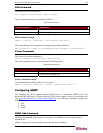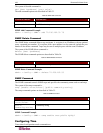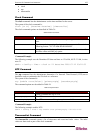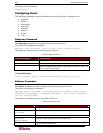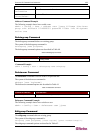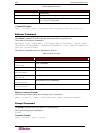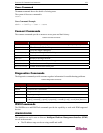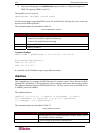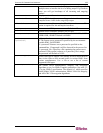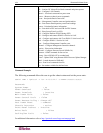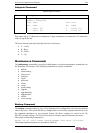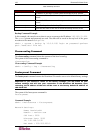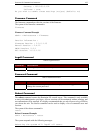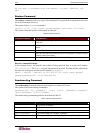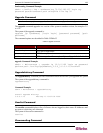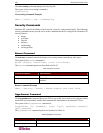
CHAPTER 12: COMMAND LINE INTERFACE 133
-v
Increase verbose output level. This option may be specified
multiple times to increase the level of debug output. If given three
times you will get hexdumps of all incoming and outgoing
packets.
-V
Display version information.
-I <interface>
Selects IPMI interface to use. Supported interfaces that are
compiled in are visible in the usage help output.
-H <address>
Remote server address, can be IP address or hostname. This
option is required for lan and lanplus interfaces.
[-p <port>]
Remote server UDP port to connect to. Default is 623.
[-U <username>]
Remote server username, default is NULL user.
[-L <privlvl>]
Force session privilege level. Can be CALLBACK, USER,
OPERATOR, ADMIN. Default is ADMIN.
[-a|-E|-P|-f
<password>]
-a Prompt for the remote server password.
-E The remote server password is specified by the environment
variable IPMI_PASSWORD.
-P <password> Remote server password is specified on the
command line. If supported it will be obscured in the process list.
-f <password_file> Specifies a file containing the remote server
password. If this option is absent, or if password_file is empty,
the password will default to NULL.
[-o <oemtype>]
Select OEM type to support. This usually involves minor hacks in
place in the code to work around quirks in various BMCs from
various manufacturers. Use -o list to see a list of current
supported OEM types.
[-C <ciphersuite>]
The remote server authentication, integrity, and encryption
algorithms to use for IPMIv2 lanplus connections. See table 22-
19 in the IPMIv2 specification. The default is 3 which specifies
RAKP-HMAC-SHA1 authentication, HMAC-SHA1-96 integrity,
and AES-CBC-128 encryption algorithms.



